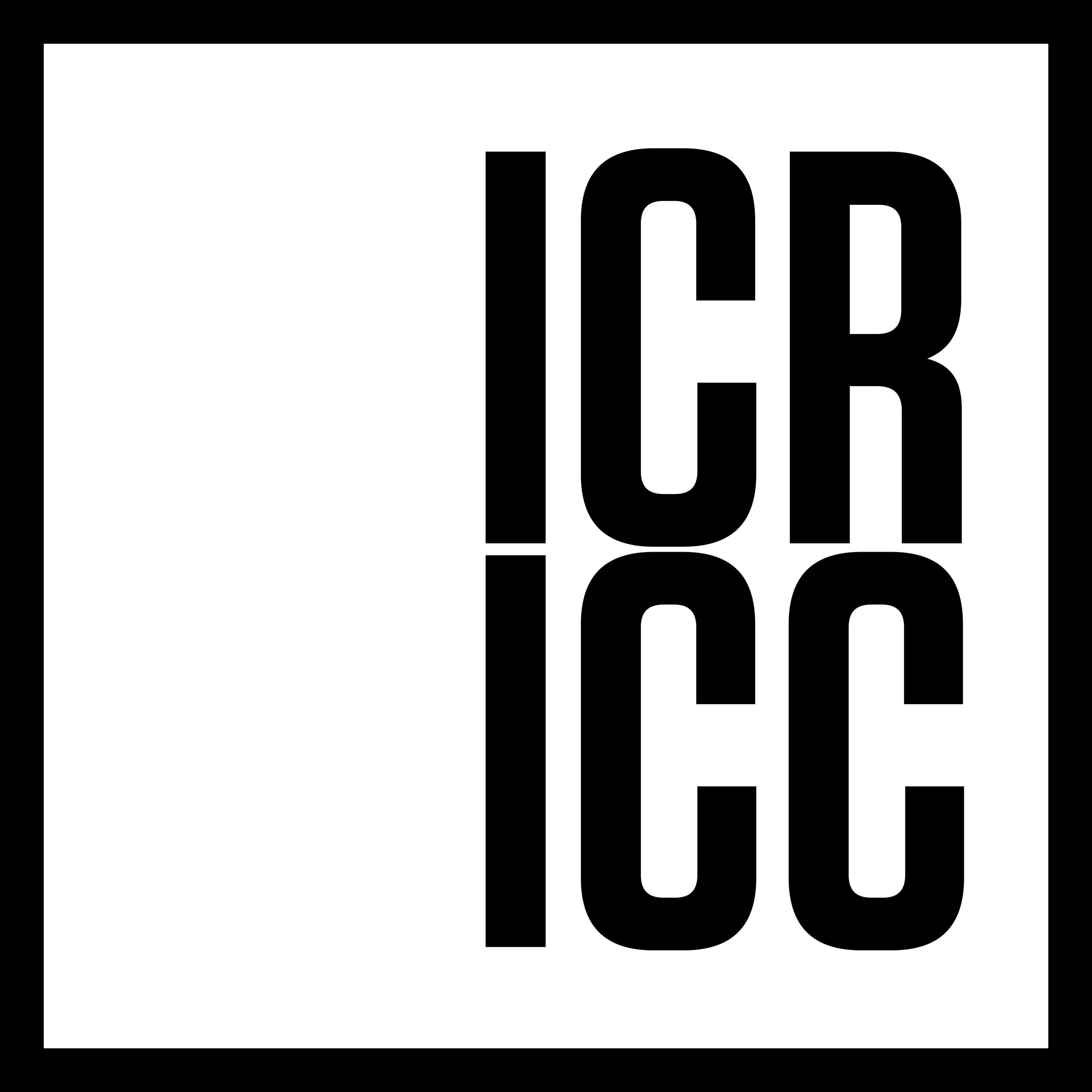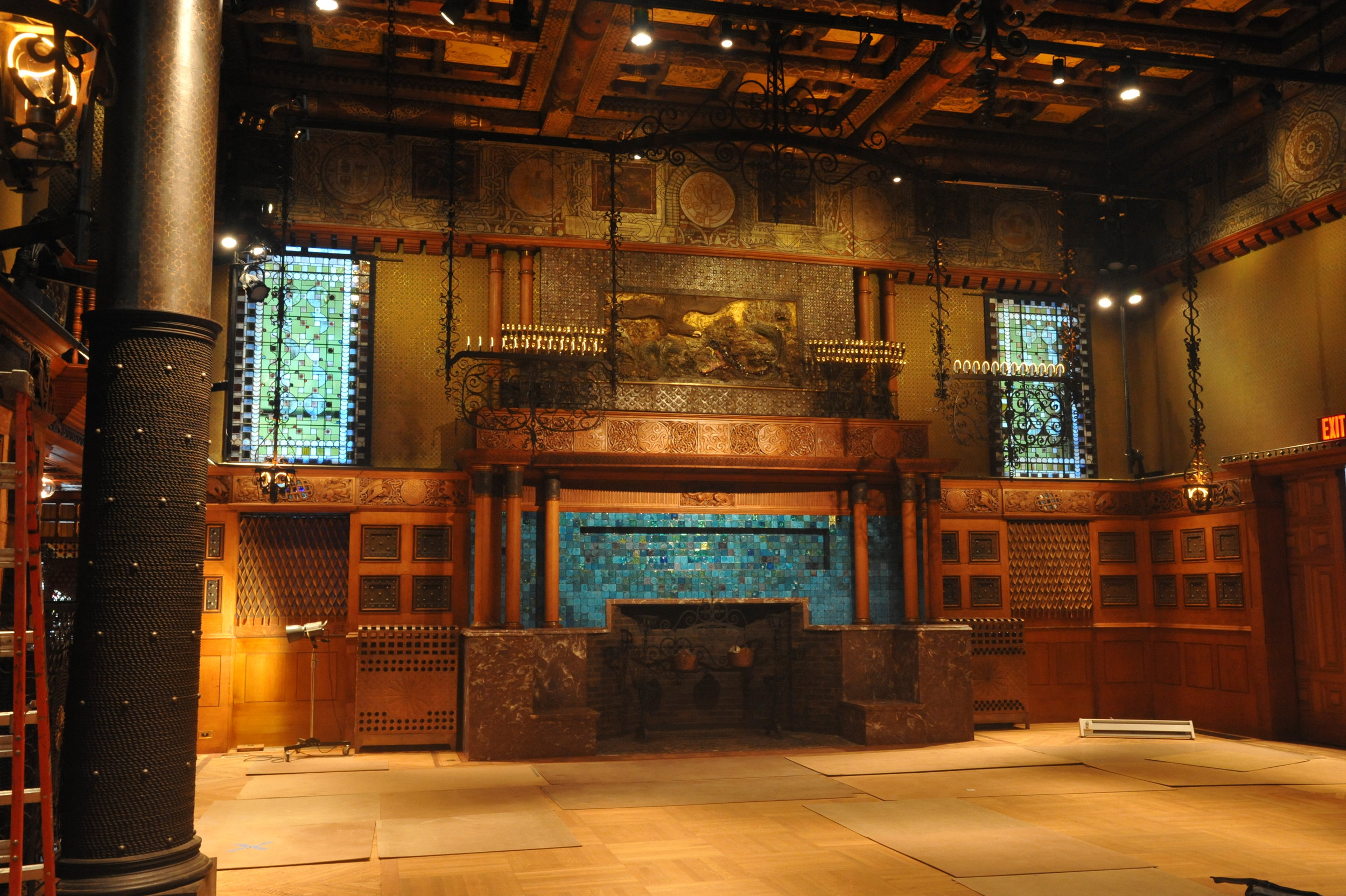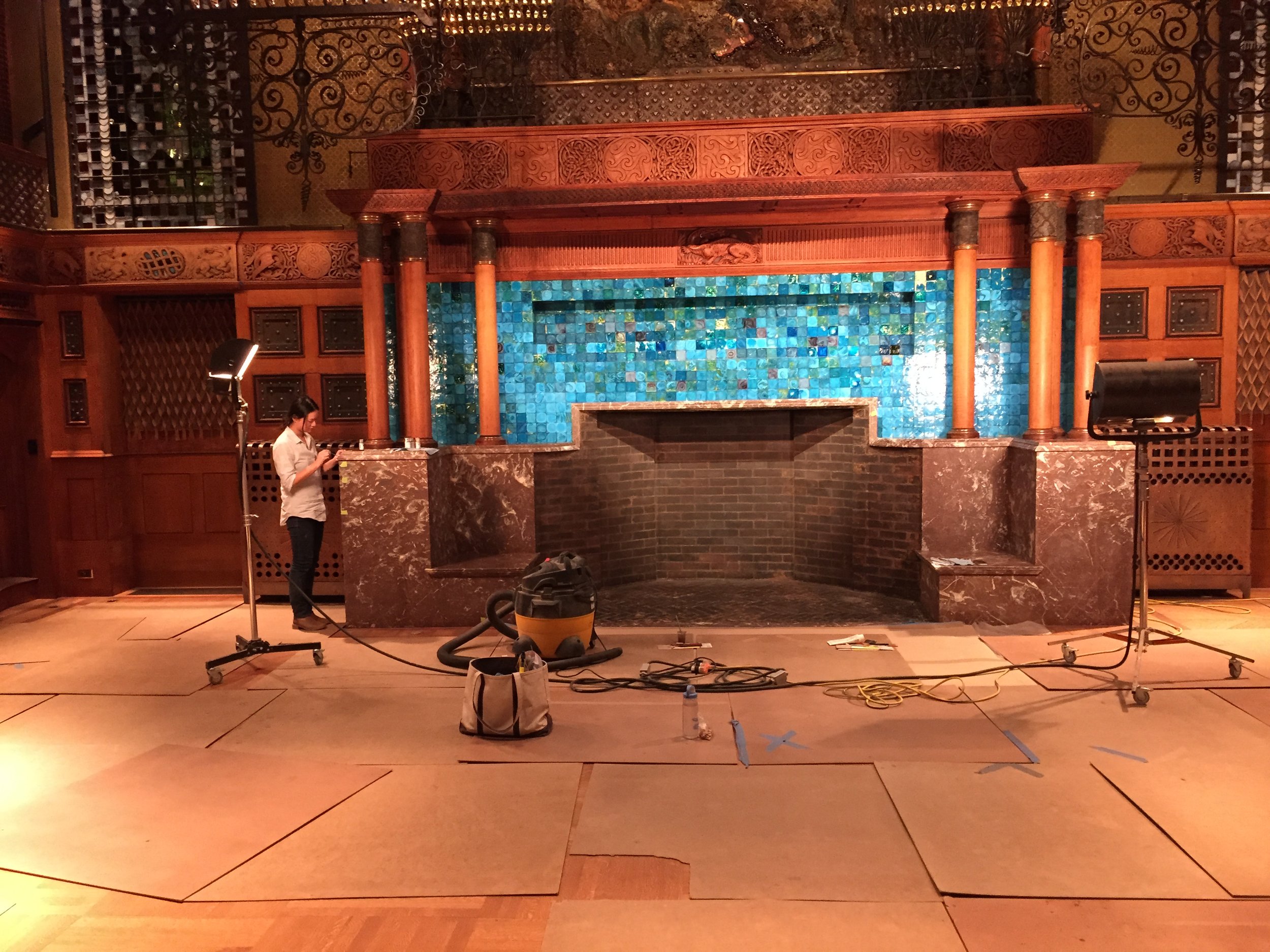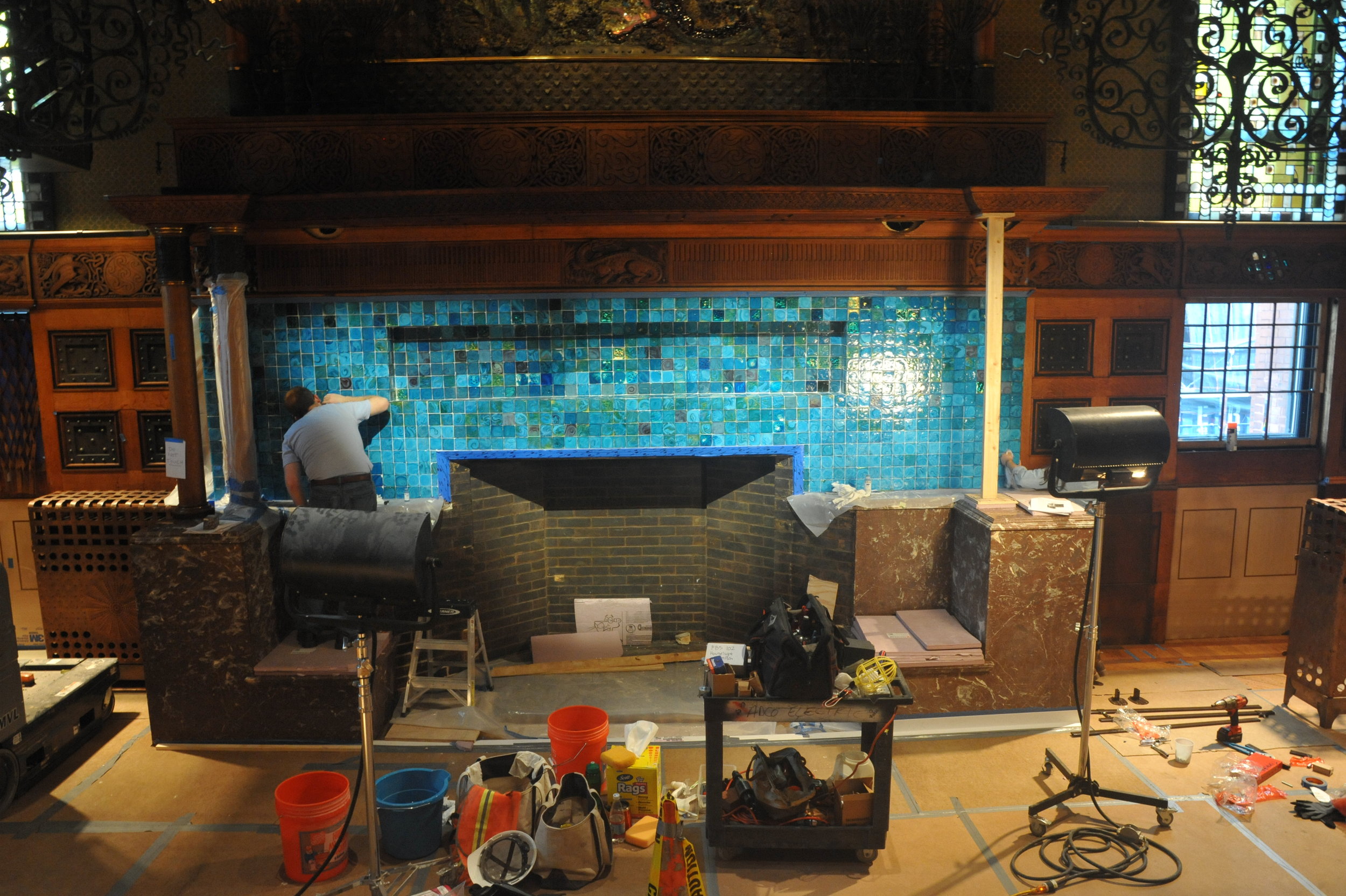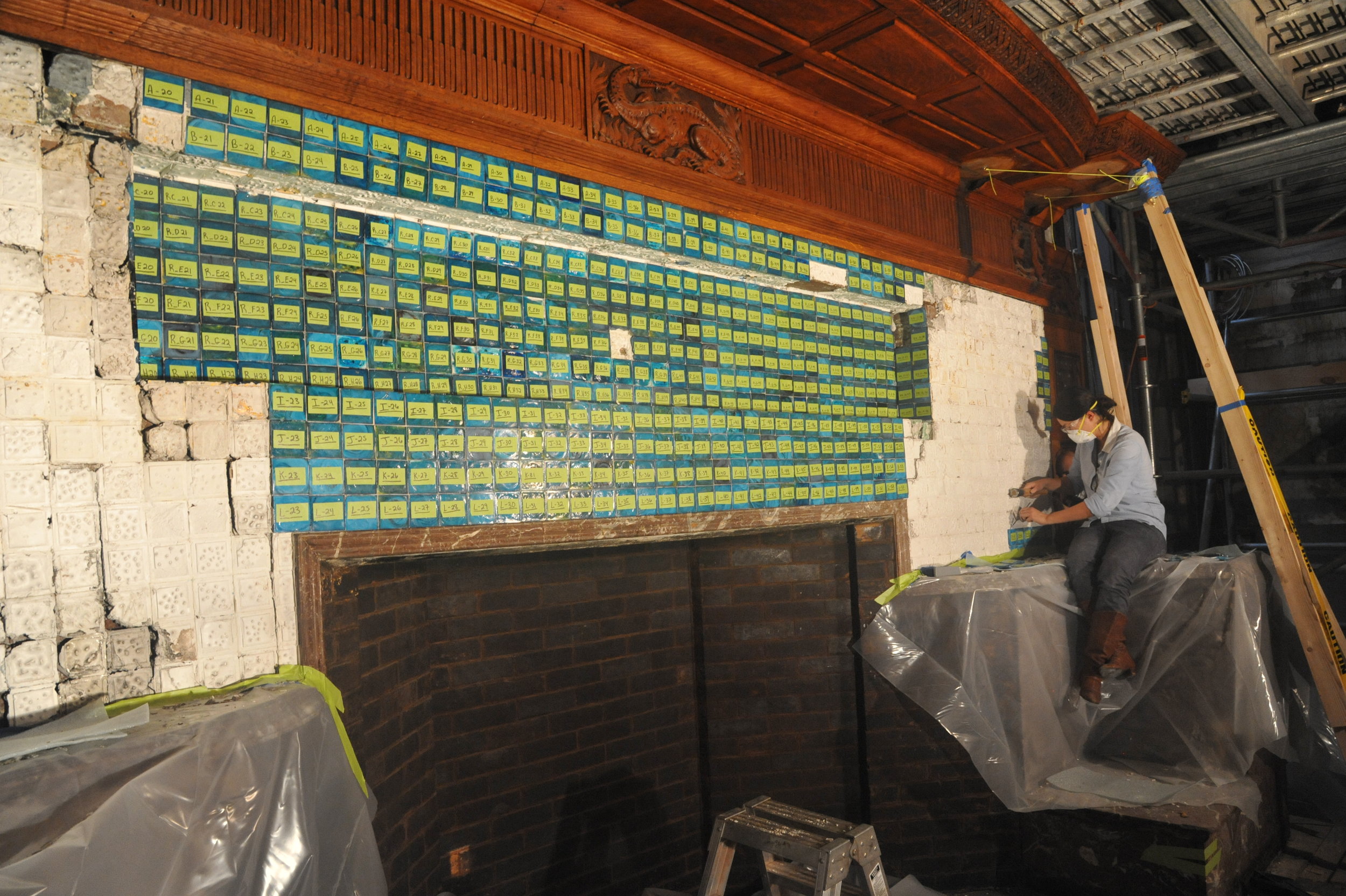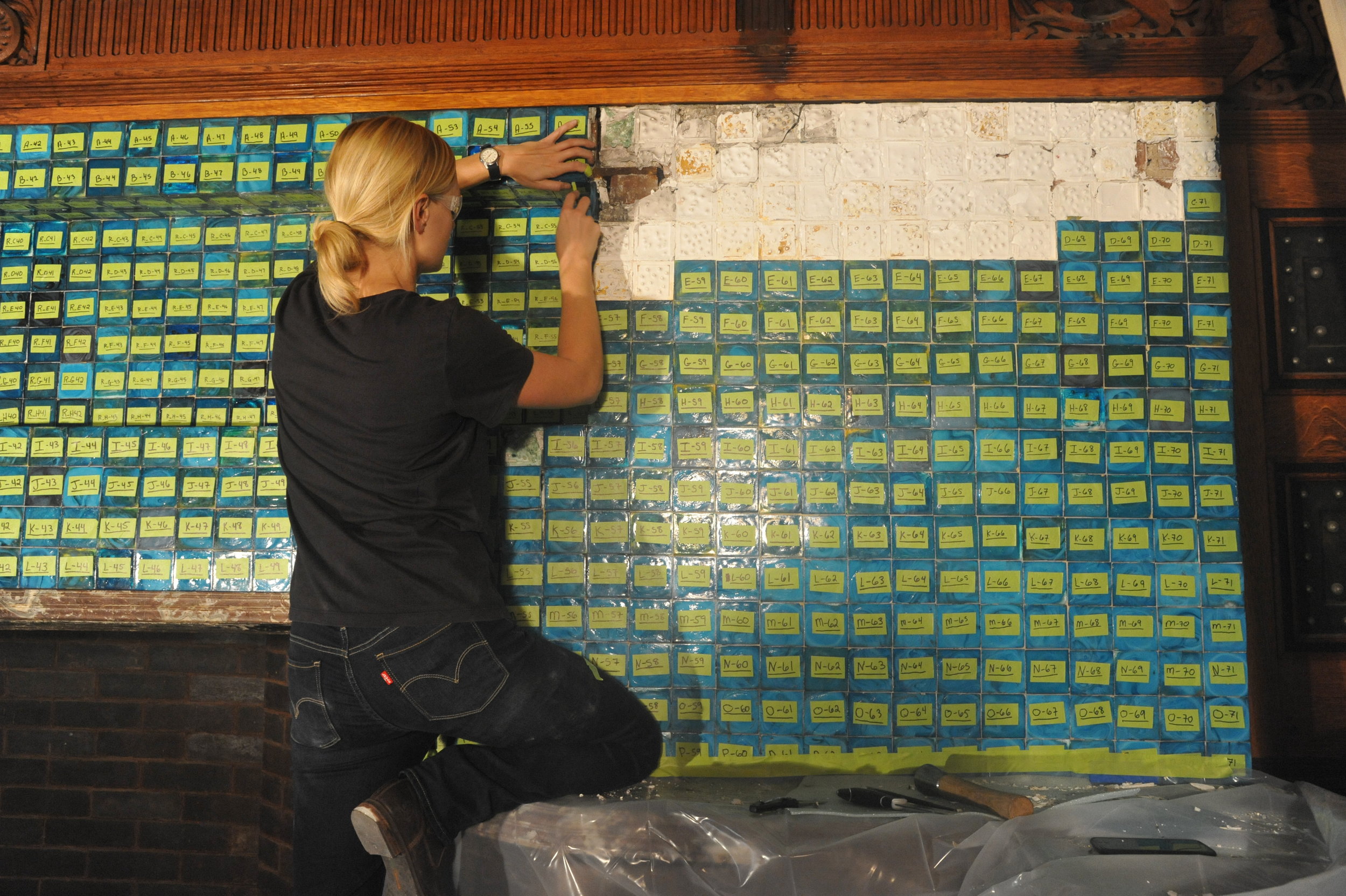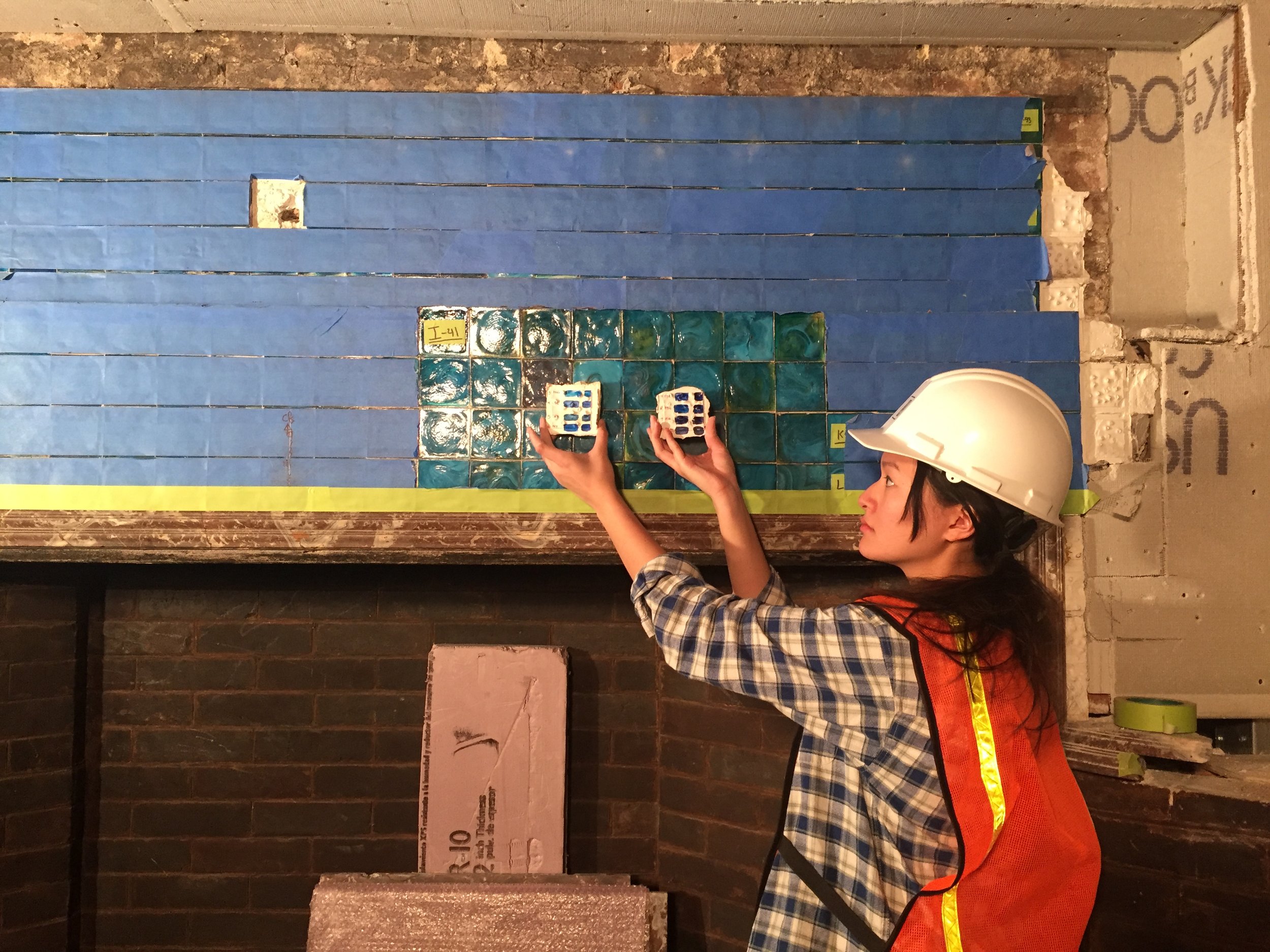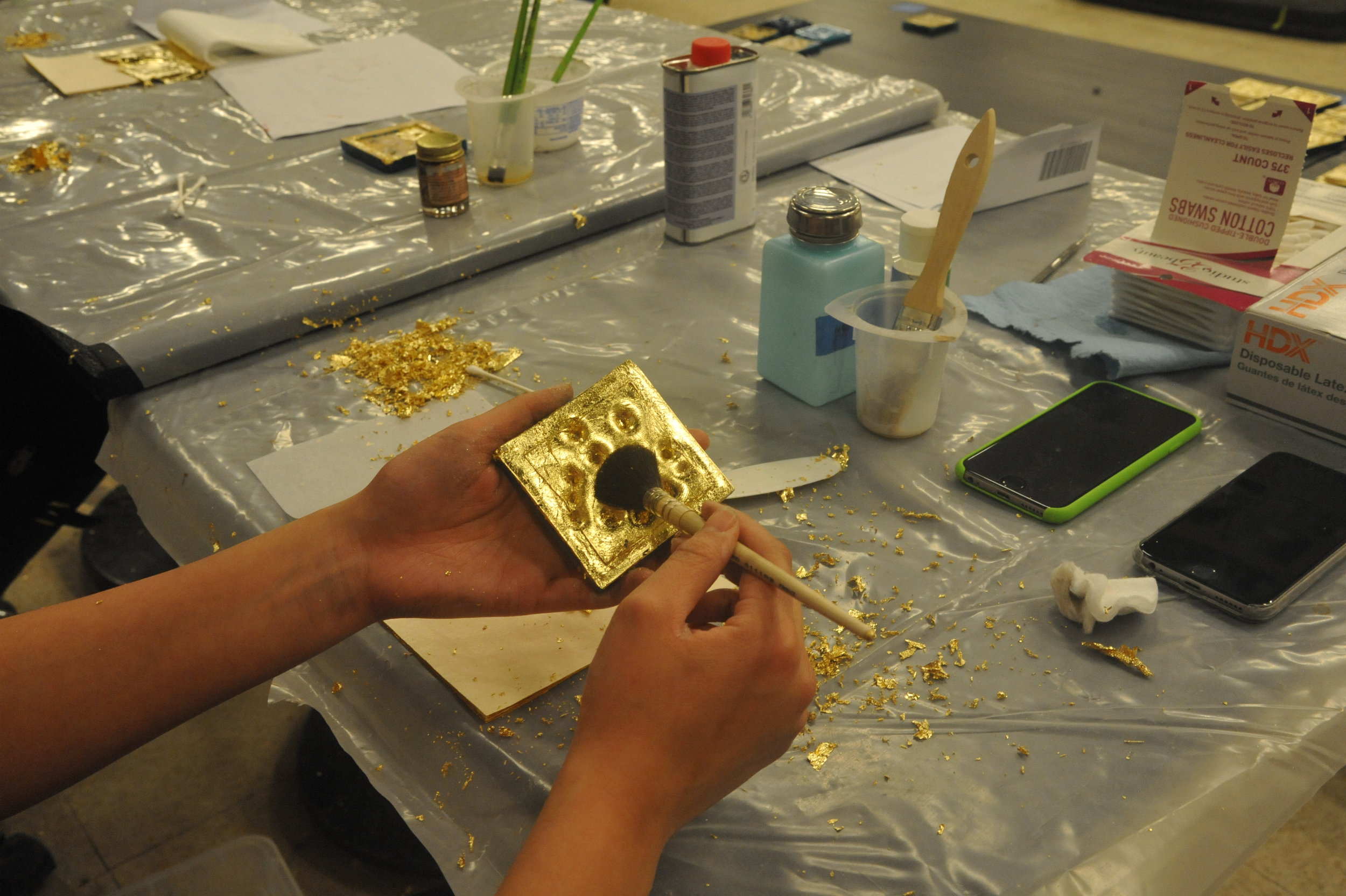Veterans Room Fireplace
Veterans Room Fireplace, Park Avenue Armory
Conservation Design-Build
Documentation and conditions assessment
Materials testing and conservation design
Conservation repair implementation
Completed in 1881, the Veteran’s Room in the Park Avenue Armory was designed as an opulent celebration of interior crafts by a team including Louis Comfort Tiffany, Stanford White, Candace Wheeler, and Samuel Colman. Amongst the high level of interior decoration, one of the central focal points is the Tiffany-designed blue and gold glass tile and burgundy marble fireplace.
Location
New York, New York
Designer & Date
Louis Comfort Tiffany, 1881
Client
Park Avenue Armory
Services Provided
ICR-ICC provided complementary design-build services for the restoration of the fireplace. In 2015, assessment began with archival research and a unit-by-unit conditions survey. Conditions of the tile, marble, and brick were annotated onto background drawings for documentation, which included cracks, losses, detachment, displacement due to surrounding elements, and heavy soiling throughout the fireplace. Several marble elements were carefully removed by ICC to allow access for structural review. After conditions were documented and surveyed, in-situ cleaning tests were conducted, and selected products were used to perform larger mock-ups for owner approval. ICR also extracted materials samples for further analysis in ICR’s laboratory including microscopic examination, gravimetric mortar analysis, and microchemical materials testing.
The information gleaned from the investigative phase was used to design a holistic and materially sensitive conservation approach that was implemented in conjunction with the full restoration and/or conservation of other decorative features within the Veteran’s Room by teams of highly skilled of craftspeople. ICR-ICC began by cleaning and carefully removing the original tiles and marble panels due to their displacement and structural instability, as well as removing several courses of brickwork. All elements requiring removal were documented, labeled, carefully removed, and brought to a temporary on-site studio for repair. Broken marble was repaired by re-adhering pieces with color-matched material and honing the marble to a uniform finish. Glass tiles were gilded by ICR and cracked and broken tiles were reviewed and either repaired and reconstructed, or replaced with new custom-fabricated tile. ICR-ICC then reinstalled the tile, marble panels, and brick, ensuring that elements returned to their original location and corrected configuration. Following the reinstallation of the historic elements, in-situ conservation commenced to compensate losses and provide aesthetic continuity. This included painting the tile grout lines and installing sculptural fills that were then faux-marbled to blend with the surrounding masonry. Upon completion of the fireplace restoration, ICR provided maintenance recommendations to the client to ensure that this lavishly decorated historic monument is preserved for the future.
